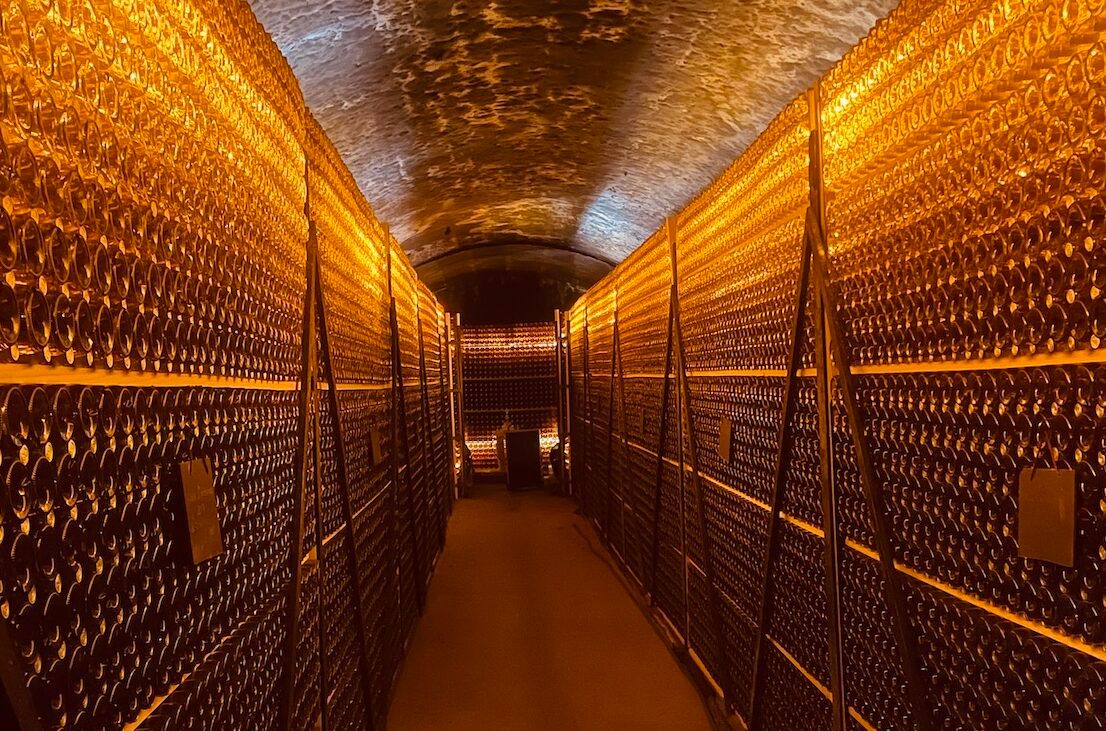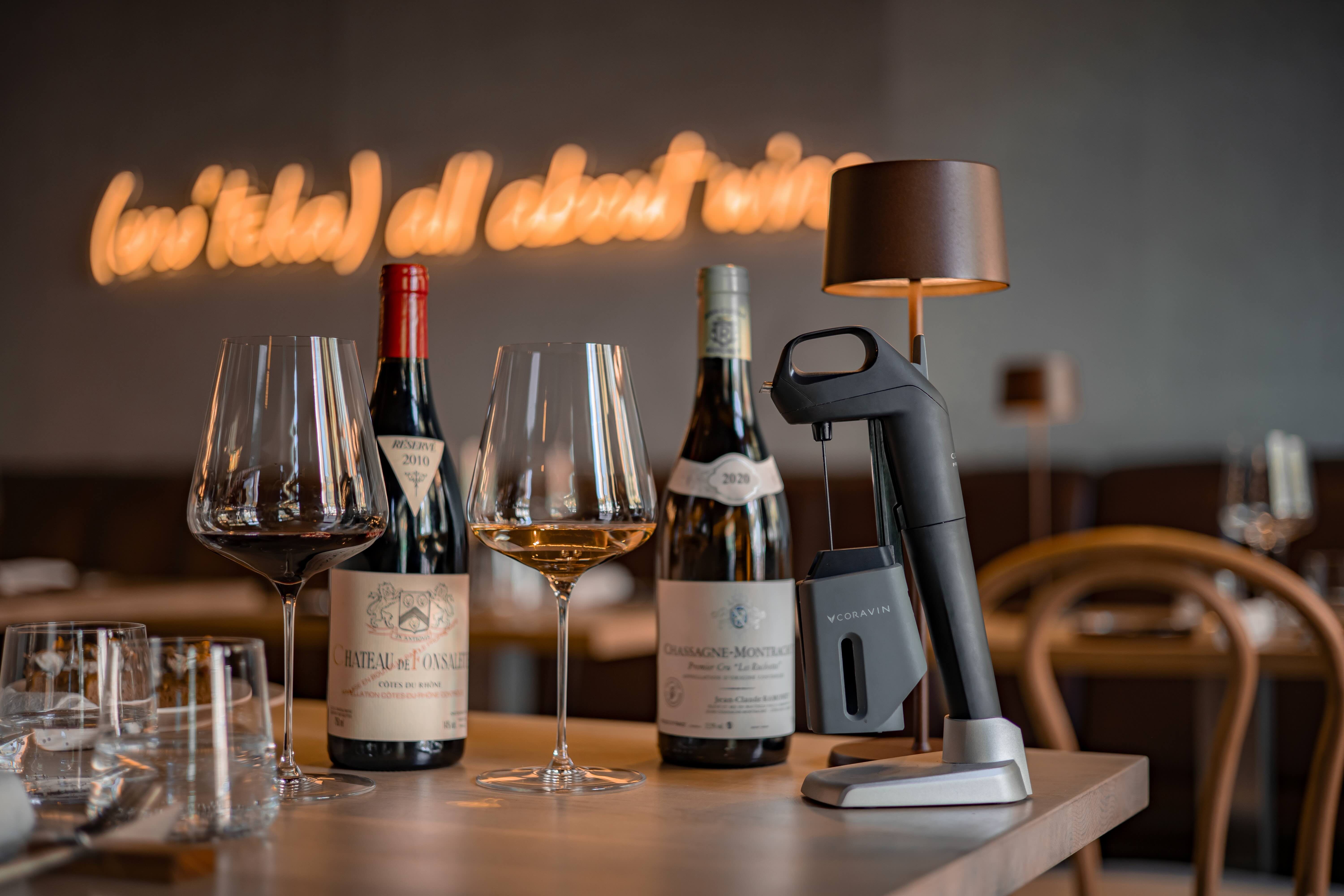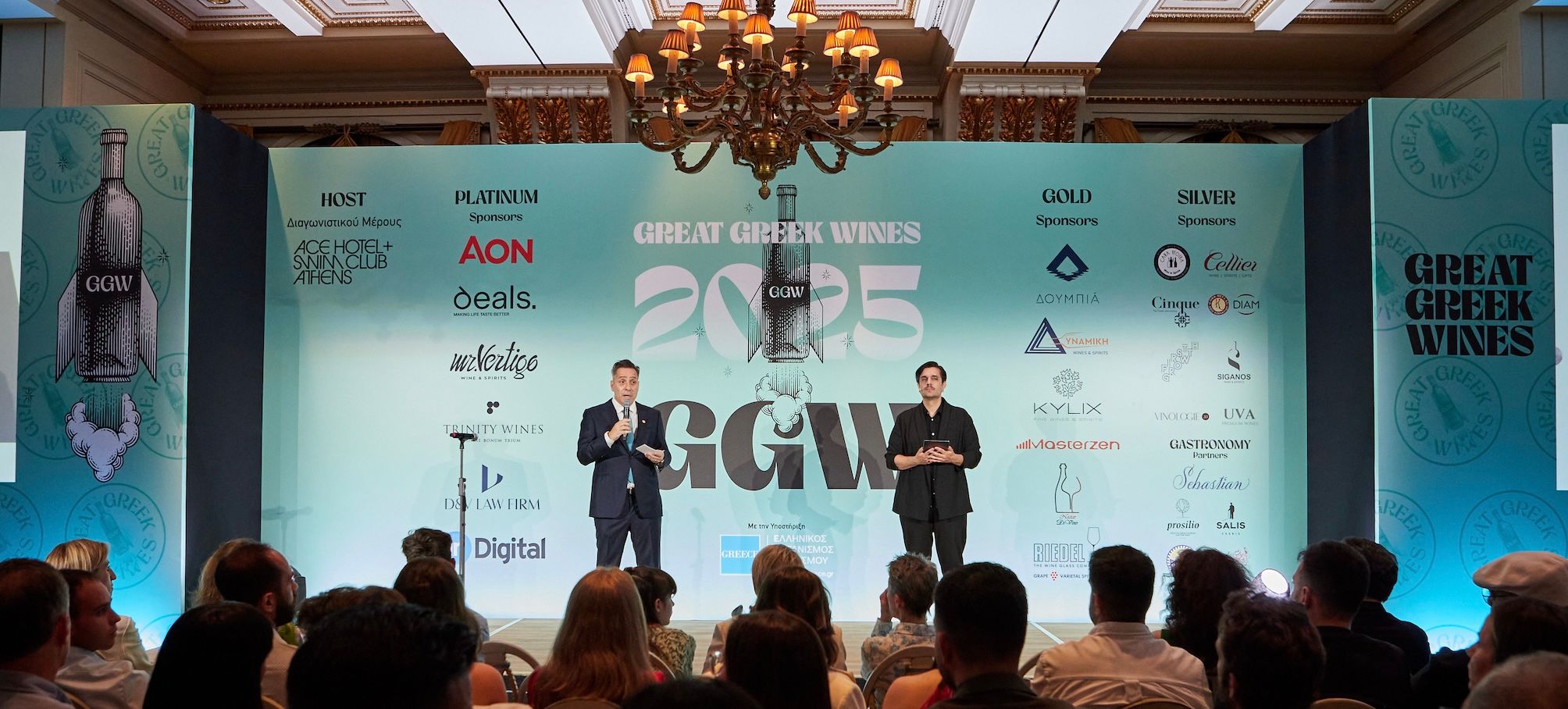“Szamorodni has the marked distinction of offering the sublime smorgasbord of flavours botrytis conveys as well as the wonders of oxidative nutty Manzanilla. Could there be a more tantalising combination?” asks Garnett rhetorically.
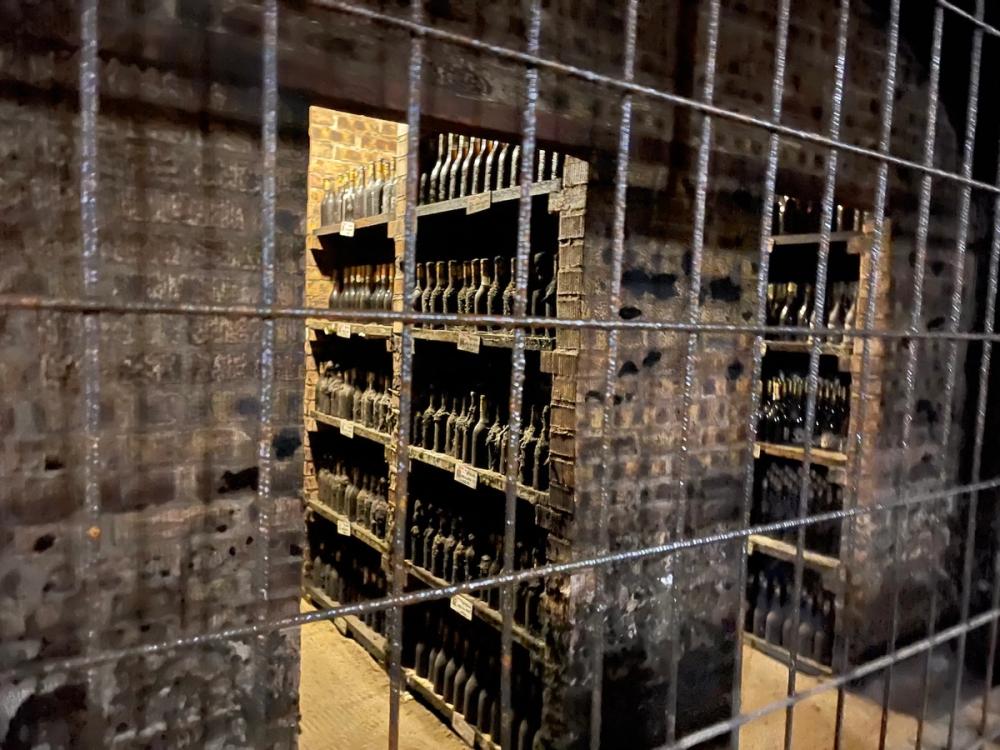
Szamorodni ageing in the cellar at Disznókö
Tokaj is one of only three places in the world with a history of wines aged under flor and I think it may be the only place to use botrytised berries in a biologically aged wine fermented to dryness. On my second visit to this beguiling region, I was fortunate enough to take a closer look at dry, flor-aged Szamorodni.
But first, a little bit of history and geography
History is littered with references to the fine wines of Tokaj, after all Hungary is one of the world’s most ancient winemaking regions.
A violent past and geographical location between warring empires precipitated the passage of wine knowledge from the Balkans, Italy and the Caucasus directly into Hungary’s collective psyche. In 996 Benedictine monks, known for their winemaking prowess, settled in the Pannonhalma region.
Tokaj has a humid, botrytis-favouring climate, volcanic cellar-ready ground rock, cladosporium cellare, a fine retinue of high acid indigenous grapes and two interlocking rivers – perfect conditions for creating the finest wines known to humanity.
Once a huge shallow sea, Hungary sits in what is called The Pannonian (aka Carpathian) Basin. Located at the foot of the Zemplèn/Tatra mountains near the border with Slovakia, Tokaj sits atop of a multitude of 400 extinct volcanoes. Soils are mineral rich and predominantly volcanic, therefore extremely varied. The climate is classically continental with hot summers and lengthy humid autumns.

Tokaj has perfect conditions for grape-growing
Vine Law was drawn up in 1641 for Tokaj-Hegyalia. It outlined rules for site selection and even irrigation. Written evidence of vineyard councils reaches back further still, to the 13th century. Legend has it that Zsuzsanna Lorántffy, the Transylvanian wife of Prince György I, was the first to create sweet wines at Zemplén in Tokaj when a harvest delayed by war necessarily utilised botrytised berries.
Tokaj lays claim to be the world’s first ever demarcated wine region. It was delimited by royal decree in 1737 when 27 villages were named suitable for making Tokaj and allowed to use the name. This classification predates Portugal’s Douro by 20 years, Rhine’s Beerenauslese by 100 years and France’s Sauternes by more than 200. A recent move to distinguish Tokaji dry whites by offering them in an unique bottle has proved successful. Riedel has even designed an appropriate glass.
In the 18th century Tokaj was the wine of the moment and references to its royal patronage exist throughout Europe. Then came phylloxera, then Communism. Expropriated private vineyards were redistributed. Grapes were collectively farmed regardless of quality and difficult-to-farm plots, while those of the highest standing, were often abandoned. Many of the ancient winemaking traditions were lost and the championing of volume over quality rendered ancient, precipitous, low-yielding vines obsolete.
1989 saw the fall of Communism and, desperate for hard currency, the Mayor of Mad in Tokaj and the local co-op sought urgent outside investment. The Royal Tokaj Wine Company was established by Hugh Johnson and winemaking impresario Peter Vingding-Diers (Pingus, Rustenberg, Landiras and Montecarrubo). Hugh Johnson had understood the importance of these ancient winelands and fought for their recovery.
In his book, Viking in the Vineyard, Dier recounts his discovery of an ancient map detailing three levels of Tokaj vineyard classification. First, Second and Third growths as identified by Prince Rakoczi in 1700. (Today Royal Tokaj Wine Company is expertly managed by Charlie Mount, a brilliantly open, warm and approachable source of fascinating history and wonderful wines.)
Some 35 years after the fall of Communism, ancient Tokaj crus have been resurrected. Only white wine is produced in Tokaj, with 70% of wine production being dry. Noble rot-inducing mists only create the perfect conditions for bunches of botrytised grapes, ‘Aszù’ every three years so dry wines have always been produced.
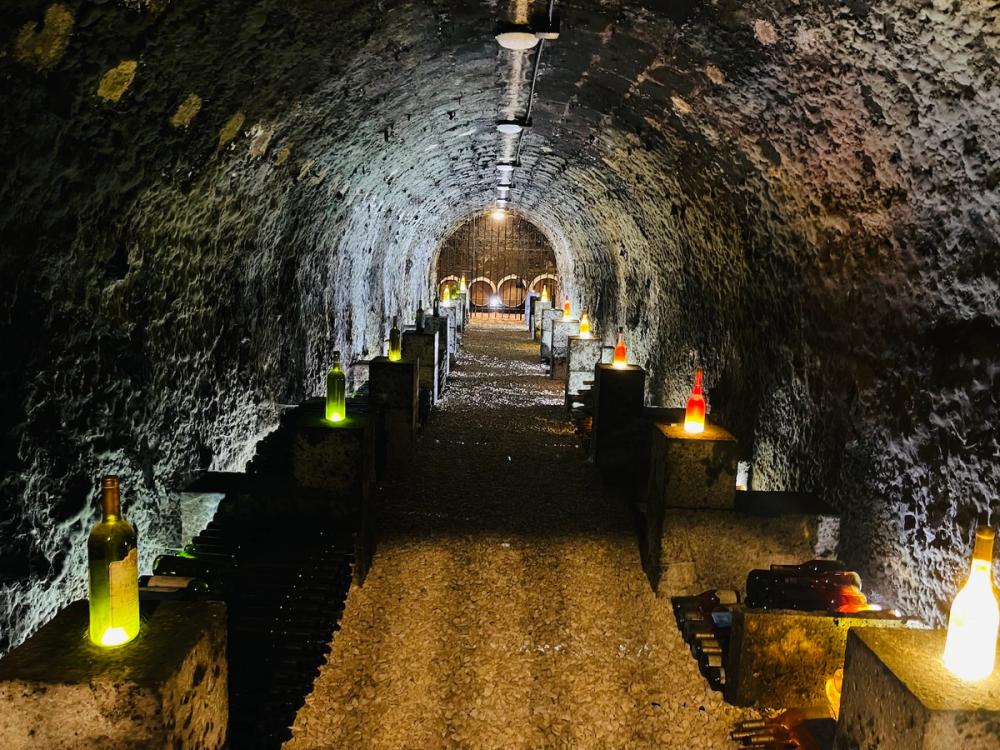
Ubiquitous black cellar mould aka cladosporium cellare
Understanding the different wine styles
Tokaj (or Tokaji – meaning of Tokaj), wines are actually simple to grasp but can be confusingly conveyed. Both Tokaji Aszú and Szamorodni are made from or contain ripe, botrytised grapes. Aszú refers to grapes concentrated and sweetened by the beneficial fungus botrytis/noble rot, macerated in must or base wine for a few days, then pressed and fermented to create the sweet style that Tokaj is famous for. A 1773 account of Tokaji wines by visiting Scotsman Sylvester Douglas sheds light on their popularity,
“It is a popular dessert wine in the major Viennese and Hungarian houses. It is very commonly drunk in Poland and Russia, being used at the table in those countries, just like Madeira here.”
- Late Harvest Wines – usually fermented and aged in tank.
- Szamorondni (‘As it comes’) – whole bunch, partially botytised, no Aszú selection. Minimum 6 months oak ageing.
- Aszú (5 or 6 Puttonyos) – selected, hand harvested, botrytis-affected shrivelled berries soaked in must or young wine and aged in oak for a minimum of 18 months.
- Eszencia – Trickle of thick syrup made from Aszú berries, min 450 g/l sugar. Barely ferments.
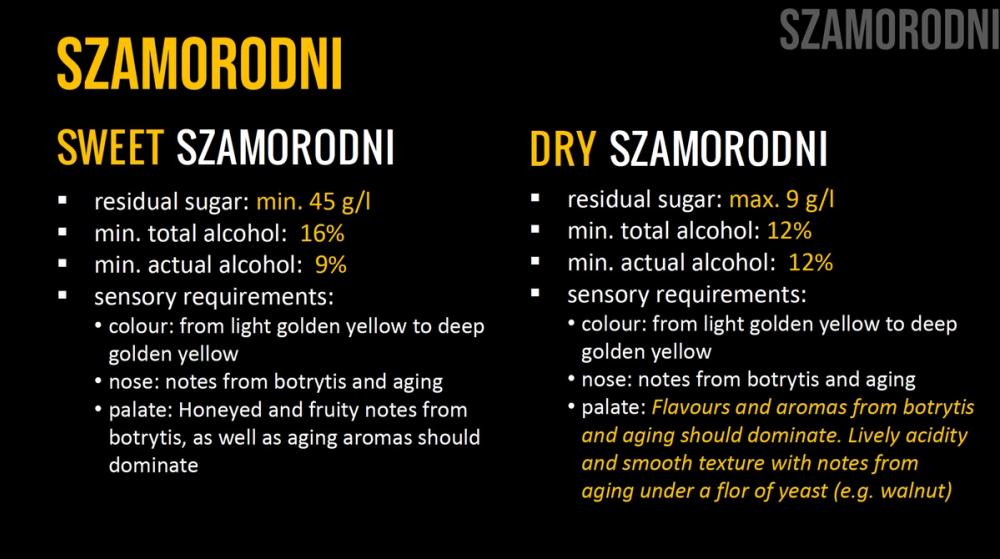
Szamorodni can be sweet or dry and it translates ‘as it is born’ because late harvest grapes are picked for Szamorodni containing both botrytised and ripe fruit. They are vinified together. Sweet Szamorodni wines are aged for at least two years in barrel, much like Sauternes, while dry Szamorodni is fermented to dryness under a veil of flor and aged oxidatively for a considerable amount of time.
Szamorodni therefore has the marked distinction of offering the sublime smorgasbord of flavours botrytis conveys as well as the wonders of oxidative nutty Manzanilla. Could there be a more tantalising combination?
The name Szamorodni derives from the Polish word ‘samorodno’; wealthy aristocratic and princely Poles were more than partial to Tokaji and Polish merchants were all over it in the 19th century, and their moniker stuck. Also known as föbor, (meaning ‘main’ or ‘principle’ wine), it is less labour intensive and, therefore, lower in price than Aszú.
Warsaw was the proud location of the Fugger or Fukier Cellar, a legendary world famous restaurant popular with Hollywood stars that boasted one of the largest collections of Tokaj and old wine in Europe. Destroyed by the Nazis during the Warsaw Uprising, resistance fighters found themselves without water for days but spoke of drinking wine from this legendary cellar as all about them brutality reigned. First-hand accounts are chronicled in the Warsaw Uprising Museum.
Fukier’s employees gave bottles of wine to the insurgents who were without water. We got a bottle of wine from 1800, so it was one hundred and forty-four years old.

Tokaj: a rich and varied history
What are the grape varieties?
Six varieties are permitted for use in Tokaj though in reality only three are really used. The six are Furmint, Hárslevelű, Sárgamuskotály (Muscat Blanc à Petits Grains), Kabar, Kövérszőlő and Zéta.
Furmint, aka Šipon, Moslavac, Pušipel. Tokaj native, one parent unknown, the other likely Gouais Blanc. 63% of plantings (circa 8000 acres) in Tokaj are Furmint but this is ever expanding as 80% of new plantings are Furmint, according to leading Hungarian wine expert Gergely Ripka. It’s the third most widely grown grape in Hungary after Kékfrankos (Blaufränkisch) and Olaszrizling (Graševina).
Hárslevelű (meaning Linden-leaved because of the shape of the slightly rounded leaves), aka Lindenblätterig, Lipovina. Native to Tokaj, one parent Furmint, the other unknown. Accounts for just over 19% of planting in Tokaj according to Ripka (2466 acres) and the eleventh most planted grape in Hungary.
Sárgamuskotály (most likely originates in Greece or Italy) aka, Muscat Blanc à Petits Grains, Moscato Bianco, Muscat de Lunel, Moschato Samou. The only international grape authorised for use in the Tokaj region where it is the third most planted grape (some 1500 acres).
Zéta aka Oremus is a cross between Furmint and Bouvier authorised in 1990. There are about 286 acres in Tokaj, 2% of plantings, and this figure is decreasing.
Kövérszőlő (means ‘fat grape’, probably originated in Hungary or Romania) aka Grasã de Cotnari. The variety was introduced in 2004, a tiny amount was planted, some 46 acres, and is no longer being planted today, according to Ripka.
Kabar, aka Tarcal 10, a cross between Hárslevelű and Bouvier that was authorised in 2006 and is rarely ever used. There are about 89 acres in total in Hungary.
And now to the dry, flor-aged Szamorodni…
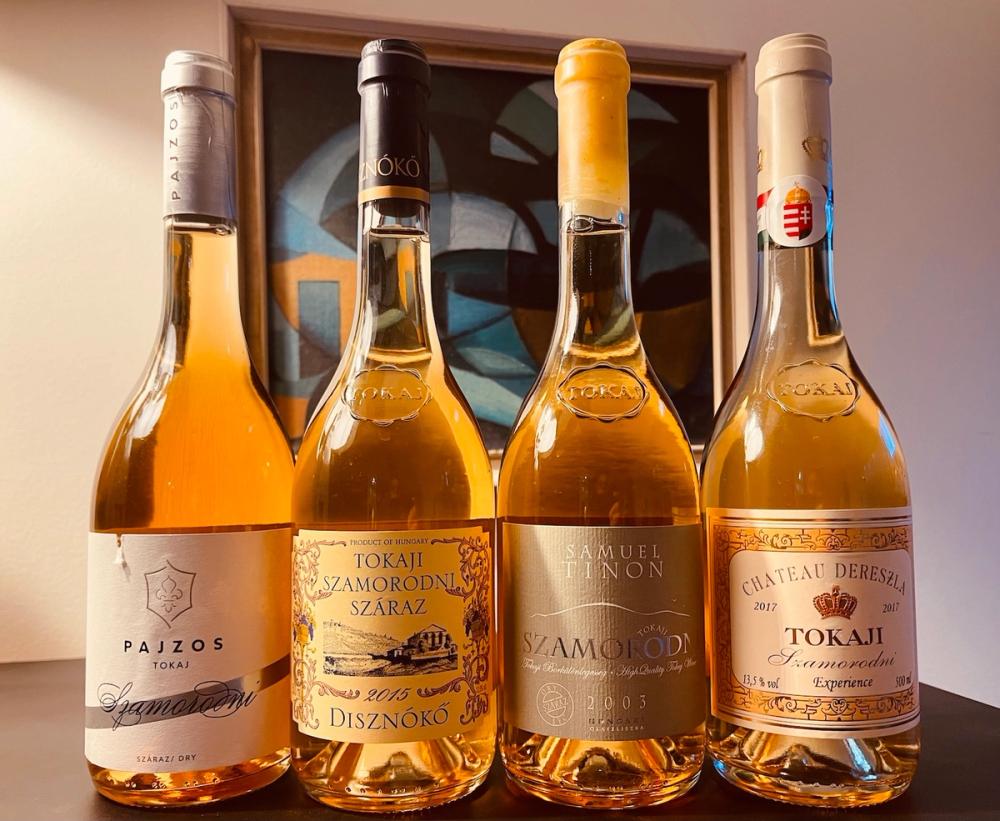
Four of the Szamorodni that stood out
Basilicus, Basilicus (Tokaj) Szamorodni 2012, 14.6%
Made from Kabar and Zéta. Aged for sven years in small Hungarian and French used oak barrels under flor. Tasted in a cold house at room temperature. Tangy orange marmalade on just baked white yeasty bread, sea salt, honeyed melon, white blossom, mandarin, apricot, pear and sour, candied citrus. Addictive layers of brazil nut and marzipan-tinged baked, buttered brioche. Culminates in an endless walnut skin finish. So light (not oily), so utterly divine and fresh. Hyperbole is justified when waxing on about the merits of this sublime wine. Inspirational, the perfect poets’ aperitif. (Basilicus will ship to the UK).
Chateau Dereszla, Tokaji Szamarodni Experience 2017 13.5%
Made from Hárslevelú and Furmint. Nutty, oily almond on the nose, walnut skin, honey, beeswax, honeysuckle, dried apricot, chamomile and forest mushroom. There is a sublime sense of weight to it, yet it’s utterly weightless; textural yet silky. Savoury, sapid, tangy with a spiced ginger note and sense of saline-edged minerality. Such freshness and a mouth-watering weightless finish. Gorgeously rich yet light as gossamer. A wine for philosophers.
Tokaji Szamorodni Száraz Disnókó 2015 13.5%
100% Furmint. Aged in oak barrels under flor for 30 months. Savoury notes of toasted walnut, yeasty, white, fresh-baked bread, mushroom, almond, pear, sour yoghurt, apple and such a moreish, savoury, nutty finish… so elegant and sapid, super tangy, textural, fresh and dry. Mildly tannic, silky and crystalline. Mouth-wateringly moreish, saline-laced finish. Intellectual exploration in a glass.
Pajzoz, Tokaj Szamorodni 2011 14%
100% Sárgamuskotály. Ginger, oily almond, musk, yellow apple, dried apricots, honeycomb, bitter spiced orange marmalade; light as gossamer yet somehow viscous, with the texture of cool-weighted satin. So smooth, so integrated with this insane, segued uplift on the finish, a salty minerality and a tender soft full stop. Long as it gets, a bats squeak of delicate, toasted walnut skin, a touch of demerara (even lavender) but dry. This is textural time travel, sensually sublime.
Samuel Tinon Szamarondni Szaraz 2003 13.8%
90% Furmint, 10% Hárslevelú. Masterfully produced by a brilliant, naturalised French winemaker who settled in Tokaj in 1991. Honey, beeswax, furniture polish, bruised red apple, dried apricots, marzipan, walnut skin, caramel, melted butter, chamomile, bitter toast, orange marmalade; this has a far more viscous texture than the others, it is silky, weightier and creamier on the tongue. The finish is fruit-driven, slightly smoky. Caramel-laced with white pepper and a touch of furniture polish. The whole is savoury, complex and endlessly evolving. Wonderful.
Naár, Tokaji Dry Szamorodni 2017 14.5%
50% Furmint, 50% Hárslevelú. Matured in 220 litre oak barrels in black mould- lined cellars. The family which makes this wine has Swabian roots, typical of the wine pedigree of this region. Nutty notes of coffee on the nose, creamy, spiced crème Anglaise and buttery brioche. Sublimely creamy – incredible texture – rich yet fresh on the palate – savoury, wonderfully light yet has the essence of the most sophisticated sherry-laced trifle imaginable about it. The finish is nutty, savoury and fresh. So delicious, it’s an absolute adventure in a glass – it offers all the wonders and delights of a sweet pudding yet not a jot of cloying sweetness. Culminates in a fresh lifted creamy tide of cinnamon, candied nuts, cloves and moreish spices.
Royal Tokaj By Appointment Mézes Mály Dry Szamorodni Furmint 2016 12.5%
100% Furmint. Made with grapes from Mézes Mály, one of only two vineyards classified as Great First Growths. This wine began at 6 puttonyos and was aged for five and a half years in used Zemplén oak barrels in the dry Szamorodni cellar at Royal Tokaj. Under flor it lost about 0.5% in alcohol annually. Round, full and utterly gorgeous. Sweet-smelling with almonds, bread dough, marzipan, dried apricots, green apple and just-grated lime zest. Fresh, vital and savoury yet rich and layered. Bone dry; endlessly moreish. This really is a majestic life affirming sup. Truly inspirational.
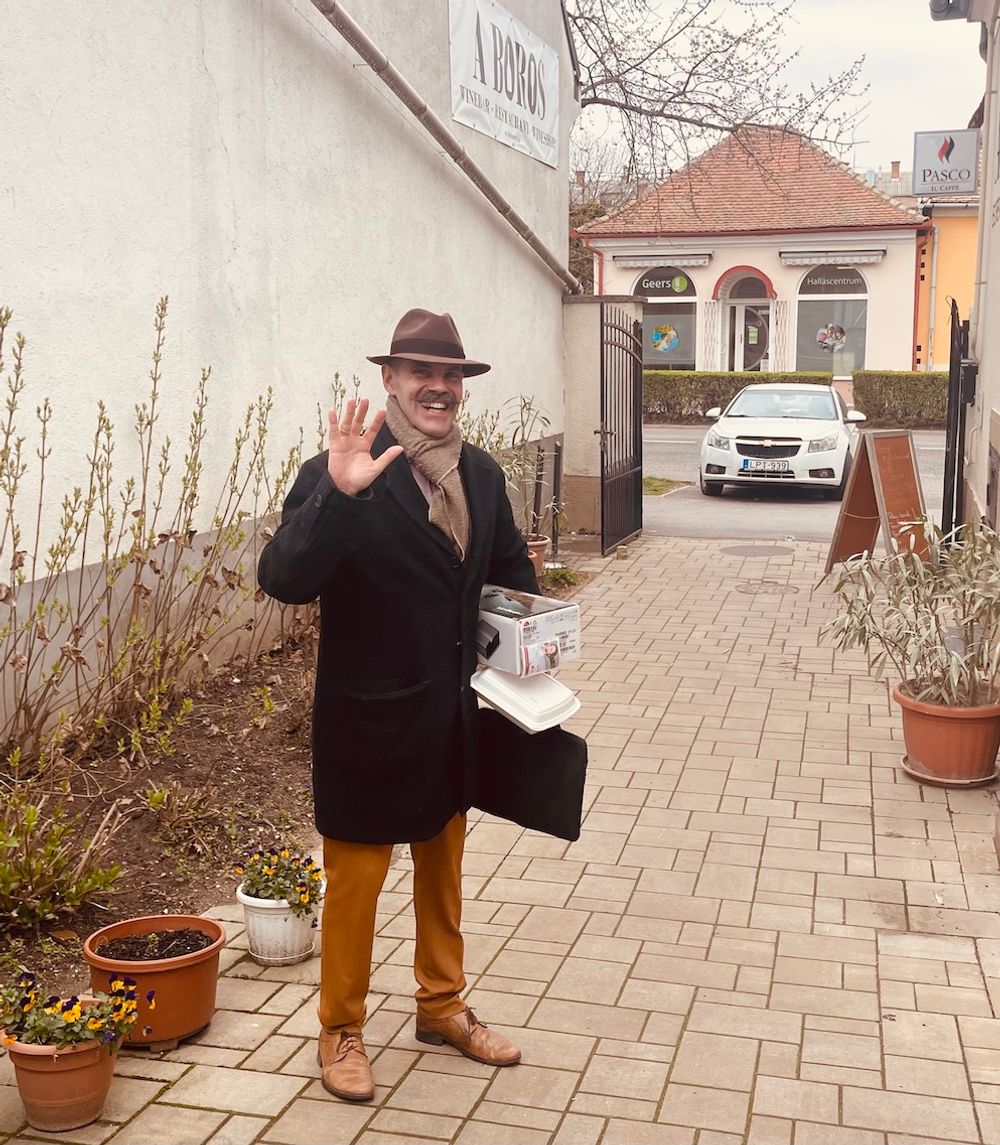
Szamorodni explorer Gergely Somogyi
For my awakening I must thank the modest yet erudite moustachioed Chieftain of Hungarian sup, Gergely Somogyi. His website Tokaj Today is an exceptional source of knowledge.
Lisse Garnett travelled to Tokaji courtesy of Wines of Hungary.
